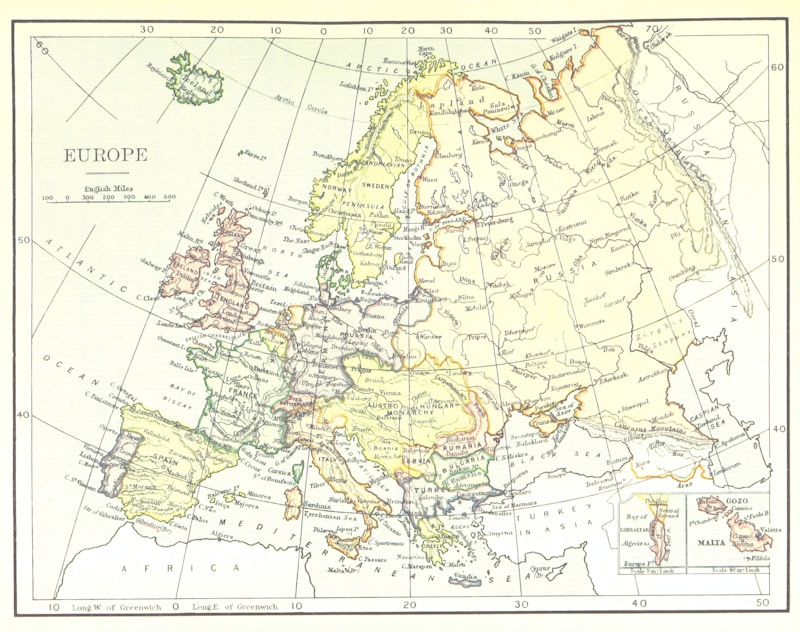Questions and Answers
What was the primary purpose of the three-field crop rotation system in the Middle Ages?
To maintain fertile soil and meet the needs of a growing population
What was the backbone of the economy in the Middle Ages?
Agriculture
What did kings in the Middle Ages have considerable control over?
Land, taxes, and justice
Which group held the most power in the social hierarchy of the Middle Ages?
Signup and view all the answers
What was the primary social and economic system during the medieval period?
Signup and view all the answers
What was the purpose of medieval towns?
Signup and view all the answers
What was the role of guilds in medieval towns?
Signup and view all the answers
What did serfs have to do in the manorial system?
Signup and view all the answers
What was the impact of the intertwined relationships between agriculture, kings, feudalism, and medieval towns?
Signup and view all the answers
What characterized the Middle Ages in terms of social, political, and economic landscape?
Signup and view all the answers
Study Notes
King Farmers and Towns: A Journey through Medieval Europe
From the rolling hills of England to the quaint streets of French provinces, the Middle Ages (approximately 500 to 1500 AD) saw the blossoming of a unique system that intertwined agriculture, kings, feudalism, and medieval towns. This article delves into the intricate relationships between these elements, providing a comprehensive yet accessible insight into the world of medieval King farmers and towns.
Agriculture in the Middle Ages
The Middle Ages was an era when most Europeans were farmers. Agriculture, the backbone of the economy, was characterized by the three-field crop rotation system. This novel method allowed for continuous cultivation, maintaining fertile soil and meeting the needs of a growing population. The continuous application of this system led to increased food production, thus contributing to the overall prosperity of medieval societies.
Medieval Kings
At the very top of the social hierarchy were kings, who ruled over vast territories known as kingdoms. These monarchs held considerable power, maintaining control over land, taxes, and justice. Kings were instrumental in shaping the political and social climate of the Middle Ages, as they had the ability to bestow titles, grants, and rights of ownership to their subjects.
Feudalism
Feudalism emerged as the primary social and economic system during the medieval period, where landowners granted land to their vassals in exchange for military service and loyalty. This arrangement established a complex web of vassalage relationships across Europe, which spanned from the King to the humblest peasant. Feudalism was a crucial element in maintaining the social order, as it rewarded loyalty and submission while curbing the power of the common man.
Medieval Towns
Medieval towns were birthed out of the need to establish economic centers that would foster trade, crafts, and commerce. Towns grew organically, with merchants and craftsmen flocking to the areas that offered the best opportunities for trade and prosperity. As the population of these settlements grew, so did the influence of guilds, which were groups of craftsmen and merchants who sought to control the production and distribution of their goods.
Manorial System
The manorial system was a key feature of feudalism, where landowners (lords) distributed portions of their land, known as manors, to their vassals (serfs). In return, the serfs had to perform labor on the manor, such as farming, and pay a portion of their harvest (tithes) to the lord. The manorial system was a microcosm of the feudal system, reflecting its hierarchical nature and the relationship between lords and serfs.
The Interconnected World
The Middle Ages was a time of change, with the intertwined relationships between agriculture, kings, feudalism, and medieval towns having a profound impact on the European landscape. This unique combination of institutions and systems allowed for the development of a complex, hierarchical society that was both prosperous and unjust. The Middle Ages were a time of evolution and growth, where the seeds of the modern world were sown in the fertile soil of the medieval era.
In conclusion, the Middle Ages was an era of great transformation, where the relationships between agriculture, kings, feudalism, and medieval towns were instrumental in shaping the social, political, and economic landscape. By understanding these elements, we can gain a deeper appreciation for the world of the Middle Ages and the factors that contributed to its unique character.
Studying That Suits You
Use AI to generate personalized quizzes and flashcards to suit your learning preferences.
Description
Test your knowledge about the interconnected systems of agriculture, kingship, feudalism, and medieval towns in medieval Europe. Explore the relationships between these elements and their impact on the social, political, and economic landscape.





